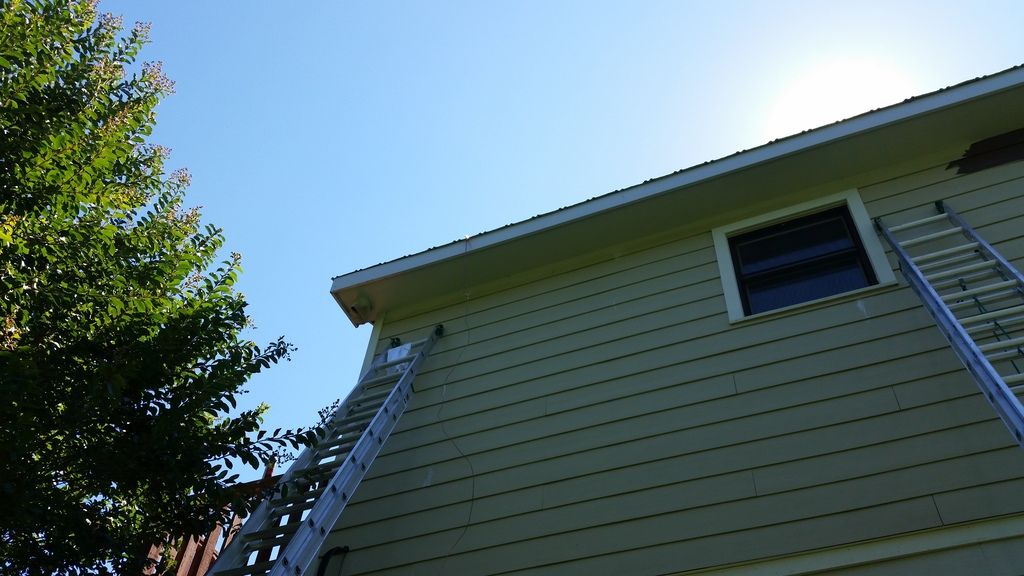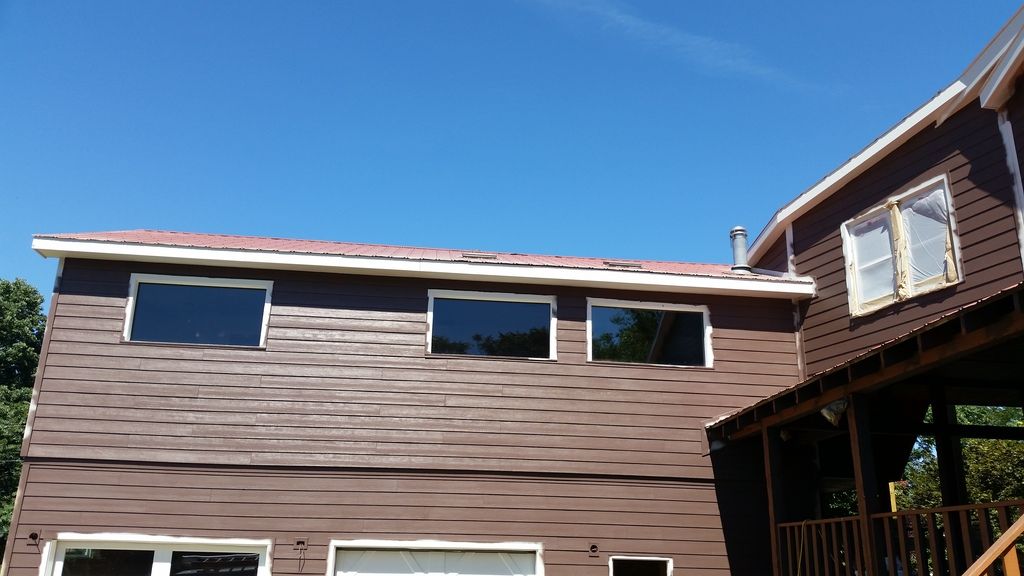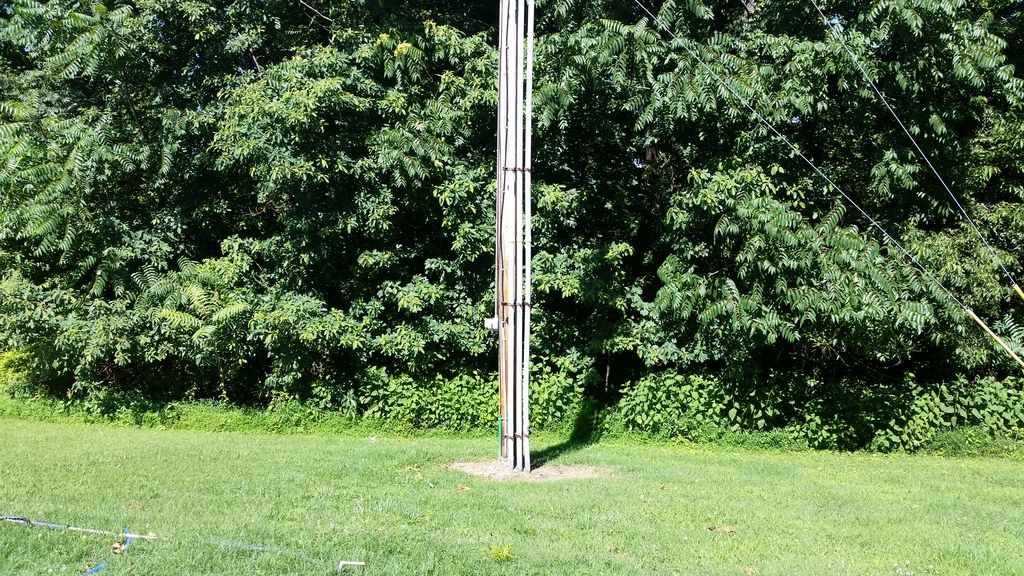- Location
- Tennessee NEC:2017
- Occupation
- Semi-Retired Electrician
I was working at a house and one of the painters said he was getting shocked off the roof. It was a metal roof and hot outside. So I thought he must have just thought he got shocked. Then another one came to me and said he also got shocked. So I went to check it out.
The part of the house where they reported the shock is an addition that was added some time ago and has a separate service. There is a single meter but dual feeds to the house & addition. The meter is on the pole about 20'-30' from the addition.
So I put a lead on the GEC or the conductor that grounds the service at the transformer. I then went up the ladder and checked the edge of the roof. Sure enough there was 120V on the roof.
Now the only thing on in the addition was a feeder breaker to a subpanel for the pool equipment. I had someone turn the feeder breaker off and checked the voltage again and it was gone. Now the only load on the subpanel was the pool pump motor.
Since I was there to do other work I didn't spend a lot of time searching for the problem. But what I did do was run a bare #8 from the EGC bar in the subpanel to the metal roof. I put an alligator clip on the end up on the roof. I had the painter clip it on the metal for me. When he touched the metal it sparked a good bit but I told him to go ahead and clip it on.
I checked the voltage again after connecting the jumper and the voltage went away. Painter was brave enough to touch the roof with his bare hand and said he didn't feel anything.
Now I know I didn't fix anything, just made it so they didn't get shocked. The HO wants me to check this out in full when I can so I thought I would share it here to get some ideas.
What I don't understand is why the subpanel or pool pump would cause voltage up on the roof. I didn't find any of the equipment with voltage, just the roof. Since nothing in the subpanel has anything to do with inside the building I'm not seeing how the roof got energized. Especially since no loads in the house were on.
Any ideas what would cause this and how to track it down?
The part of the house where they reported the shock is an addition that was added some time ago and has a separate service. There is a single meter but dual feeds to the house & addition. The meter is on the pole about 20'-30' from the addition.
So I put a lead on the GEC or the conductor that grounds the service at the transformer. I then went up the ladder and checked the edge of the roof. Sure enough there was 120V on the roof.
Now the only thing on in the addition was a feeder breaker to a subpanel for the pool equipment. I had someone turn the feeder breaker off and checked the voltage again and it was gone. Now the only load on the subpanel was the pool pump motor.
Since I was there to do other work I didn't spend a lot of time searching for the problem. But what I did do was run a bare #8 from the EGC bar in the subpanel to the metal roof. I put an alligator clip on the end up on the roof. I had the painter clip it on the metal for me. When he touched the metal it sparked a good bit but I told him to go ahead and clip it on.
I checked the voltage again after connecting the jumper and the voltage went away. Painter was brave enough to touch the roof with his bare hand and said he didn't feel anything.
Now I know I didn't fix anything, just made it so they didn't get shocked. The HO wants me to check this out in full when I can so I thought I would share it here to get some ideas.
What I don't understand is why the subpanel or pool pump would cause voltage up on the roof. I didn't find any of the equipment with voltage, just the roof. Since nothing in the subpanel has anything to do with inside the building I'm not seeing how the roof got energized. Especially since no loads in the house were on.
Any ideas what would cause this and how to track it down?





